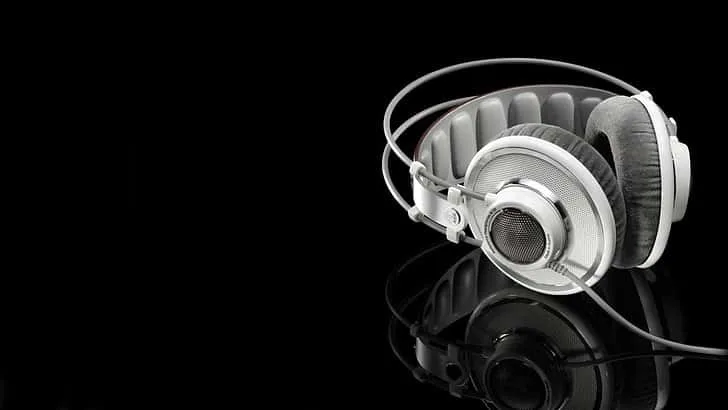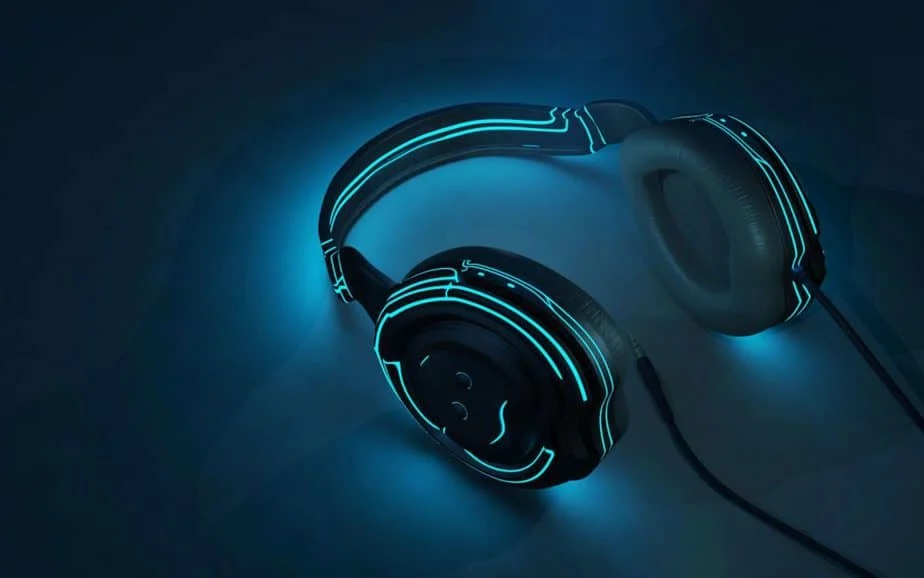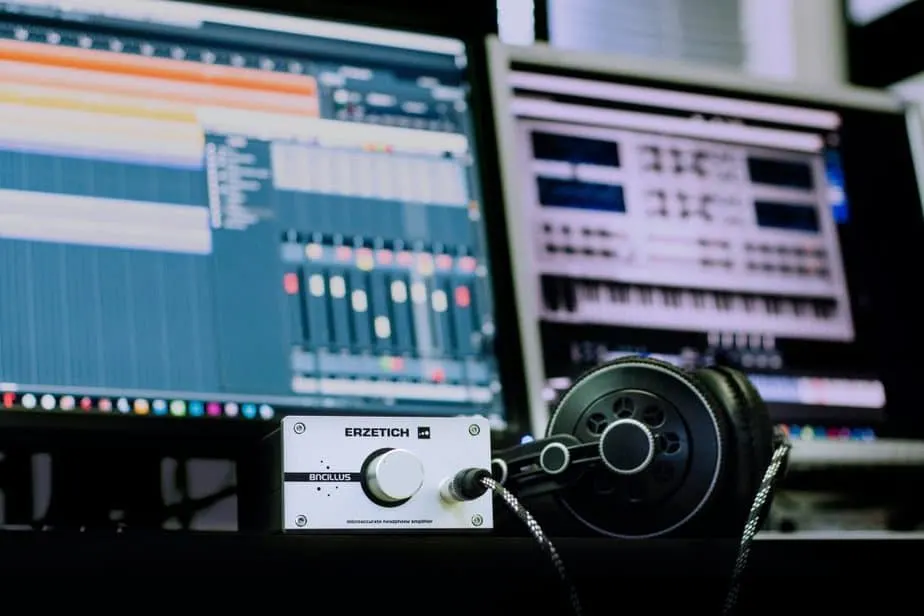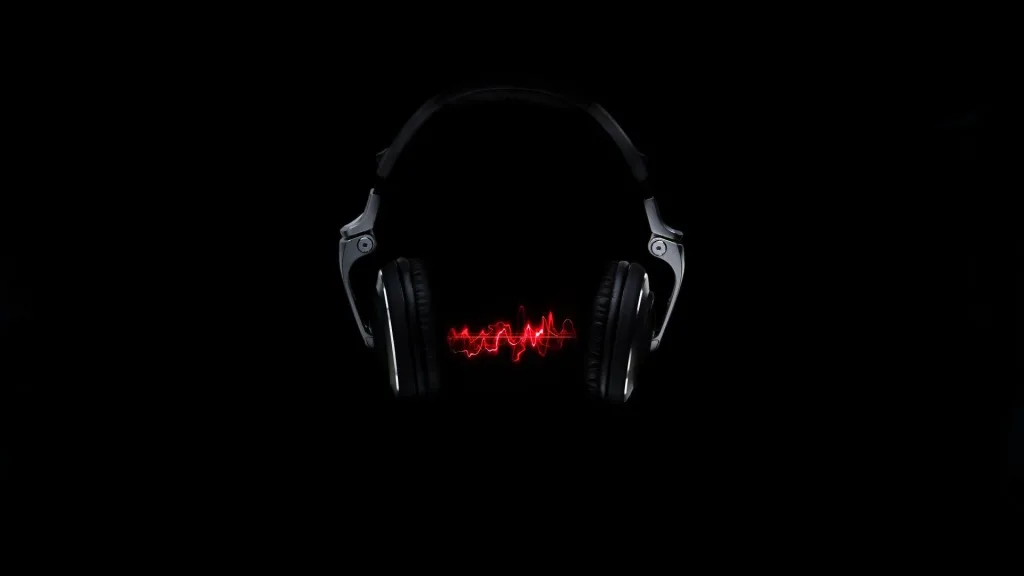When anyone asks us what they should buy to step up their competitive gaming, a good pair of headphones is at the top of our list. Several types of headphones are available right now, though, which can leave players wondering where their money is best spent.
We aim to answer that question by answering whether monitor headphones are good for gaming and why.
Are Monitor Headphones Good for Gaming?

Yes. Monitor headphones are good for gaming. However, they’re not as good for gaming as gaming headsets. Monitor, or studio, headphones are designed for analyzing music on a technical level. On the other hand, gaming headsets are built to focus on specific sounds, such as enemy footsteps.
So, as a rule of thumb, gaming headphones are better for gaming. Both types of headphones are designed for different purposes, so this should come as no surprise.
However, if you already have monitor headphones or plan on using them to mix music, there’s no problem with using them for gaming as well.
Why?
We’re going to deep-dive into this below, but the bottom line is that it comes down to sound frequencies.
With gaming headphones, there is an emphasis on specific sounds, like enemy footsteps. This allows them to sound distinct above gunfire and the noise of vehicles.
Monitor headphones, on the other hand, are flat. Every individual sound is neither emphasized nor de-emphasized. This allows producers to hear tracks as accurately as possible compared to the original recording.
There are a few other factors, such as studio imaging, that come into play, but that’s the basis of why gaming headphones are better than monitor headphones for gaming.
What are Monitor Headphones?
Monitor headphones and studio headphones can be used interchangeably. They’re both the same for our purposes.
By that, we mean headphones that music producers use. If you’ve ever gotten yourself a good pair of headphones, to the point you recognized instruments you didn’t realize we’re on a song before, imagine a step above that. That’s what monitor headphones are.
They’re designed to reproduce the original sound of the music as accurately as possible.
The phrase “monitor headphones” comes from the process of monitoring music while recording. This process involves breaking down individual sounds on a track at a technical level. That’s why each unique instrument needs to be audible.
On a theoretical level, monitoring headphones have a neutral frequency response that minimizes emphasis and de-emphasizes specific frequencies. It’s the opposite of the bass boosted headphones that dominated the market with “Beats.”
Monitor Headphones Have a Wide and Flat Frequency Range

The standard range of frequency for good quality headphones is 20 Hz to 20,000 Hz. This means that the headphones can produce a deep base of 20 Hz and a 20,000 Hz Treble frequency. It’s the range of sounds that the headphones can accurately put out.
Monitor headphones can output sounds in this frequency range and sometimes beyond it. The increased frequency range of these headphones enhances the listening experience by producing more sounds in line with the original recording.
This massive range also allows for a crisp and defined difference in high and low sounds, as opposed to them all blending into one tone.
That’s where having a flat frequency range comes into the equation. As opposed to the previously mentioned “bass boosted” headphones, This helps to keep the sound levels consistent regardless of what Hz level the headphones are producing at any point during a track.
Monitor Headphones are Used Almost Exclusively by Producers
Even for music fanatics, monitor headphones aren’t recommended for daily listening. The flat nature of the range frequency means precisely that the music is bland. You’re not going to get the adrenaline-pumping highs and lows that you would associate with great songs.
That’s not to say that you can’t use monitor or studio headphones for regular listening, but the technical nature takes away from the fun of the music.
However, we’re not looking at monitor headphones for music listening. We’re analyzing them from a gaming perspective. We don’t care so much about the game sounding good as we do to identify the location of the sound.
Given all of that, you wouldn’t be remiss of thinking that studio headphones are fabulous for competitive gaming usage. In reality, the truth is a little less black and white than that.
Differences Between Monitor Headphones and Gaming Headphones
There are a few critical differences between monitor and gaming headphones. These mainly boil down to the flat frequency range of studio headphones versus the curves we see on those made for gaming.
Gaming Headphones Aren’t Flat

As we mentioned, monitor headphones are flat so that they stay true to the sound of the original recording. That’s great for music production, but not so much for when we need certain sounds to pop louder than others.
There are two prominent examples of this: explosions and footsteps.
While the sounds of explosions are, for our purposes, pointless from a competitive gaming standpoint, there’s no denying that they sound incredible. With gaming headphones, these explosions will sound far more robust and devastating than they will with studio ones due to the emphasized bass.
However, what’s footsteps are infinitely more important.
Like how a boosted bass makes explosions sound louder, boosted highs allow enemy footsteps to ring out distinctly. With monitor headphones, the sound of steps would be lost in the cacophony of gunshots and activity. With gaming headphones, they’re clear and loud. This is precisely why gaming headphones are so good.
Not only are the footsteps harder to hear, though. They’re also harder to pinpoint.
Gaming headphones have a narrow sound stage. Limited sound stages keep the various bits of audio you hear close together, giving you better positional accuracy on where each sound is coming from. Monitor headphones, on the other hand, tend to have comprehensive sound staging. This keeps the audio components more spaced and “airy,” preventing accurate pinpointing.
This difference is also visible in imaging. Imaging is directly related to the localization of sound. Gaming headphone manufacturers tend to use the phrase “surround sound” to refer to this.
All that means is that if something is happening left of your character, you’re going to hear it through the left headphone, and vice versa. Monitor headphones have excellent imaging, but having a wide sound stage limits performance in this area compared to the narrow specifications of gaming equivalents.
Other Technical Differences
Those are the most significant differences between gaming and monitor headphones. These factors lead us to suggest gaming headphones are better than monitor headphones top-tier for gaming. They’re not the only differences, though. There are a few more. For example, compatibility can be an issue when comparing the two. Specifically when it comes to audio jacks.
Most gaming headsets use 3.5mm audio jacks. This is the standard industry size. That’s also the size that your PlayStation controllers and PC ports are designed to fit. Monitor headphones, on the other hand, use 6.5mm jacks. These aren’t going to fit in ports designed for 3.5mm.
You can work around this, of course, by using adapters. That extra step can be annoying compared to the plug and play offered by gaming headsets, though.
Lastly, we need to talk about comfort. Both monitor headphones and gaming headphones are good in this regard, but that doesn’t mean that both are on equal footing.
Monitor headphones, at every level, are designed for long-term use. Producers can work 10+ hours in a single sitting, meaning the headphones are designed to provide comfort at that level.
While the same is true for top-tier gaming headsets, it isn’t for budget ones. If you’re looking at a gaming headset for less than $100, you’re not going to get the same level of comfort as a studio set at the same price.
FAQs

Can I Use Monitor Headphones for Listening to Music?
You can, but you shouldn’t. While they are designed for mixing and creating music, they’re not ideal for casual listening.
This is because monitor headphones don’t emphasize any frequencies. The high notes and low bass sounds you would associate with your favorite songs won’t be as vibrant as they would with headphones designed for casual use.
Which is Better for Gaming – Monitor Headphones or Gaming Headphones?
Gaming headphones. The difference in design allows gaming headphones to highlight important sounds, as well as what direction they’re coming from.
What are Monitor Headphones Used for?
Monitor headphones, or studio headphones, are used by music creators while working on beats and songs. They provide listeners with an in-depth experience that allows individual instruments to be focused on.
This post is part of a collaboration with AudiophileHaven.com

